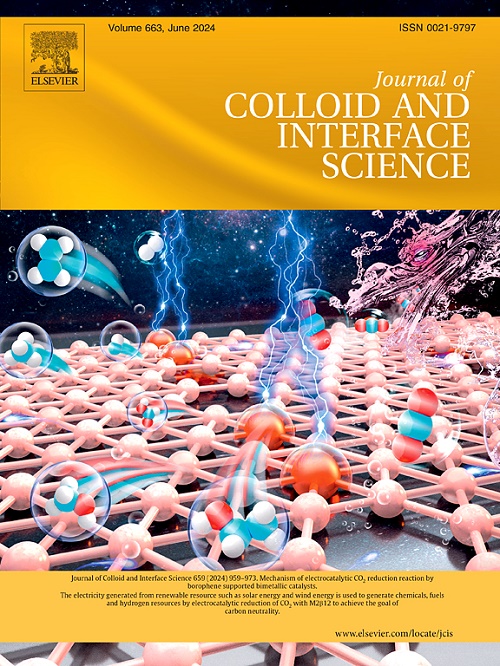利用新型NiCo双金属金属有机框架通过CO2光还原进行CO驱动可调合成气合成。
IF 9.7
1区 化学
Q1 CHEMISTRY, PHYSICAL
引用次数: 0
摘要
合成气具有重要的工业应用,将CO2转化为CO对合成气生产至关重要。金属有机框架(MOFs)在光催化合成气转化中显示出巨大的潜力,尽管催化反应对可调H2/CO比率的影响尚不清楚。本文提出了一种新型双金属NiCo-MOF催化剂Ni0.4Co0.6,由于CO产物的自驱动效应,在合成气转化中表现出较高的催化活性。我们的研究将实验数据与密度泛函理论(DFT)分析相结合,揭示了高光电流响应和低电荷转移电阻。此外,在Ni-MOF中引入钴导致d带中心的上移,从而提高了*COOH中间体的转化效率,这被认为是CO2转化的速率决定步骤,从而提高了CO的产率。CO的共吸附降低了催化剂对*H的结合能,从而促进了H2的生成。这些综合效应有助于自驱动提高合成气的催化生产。通过调节Ni/Co比,H2/ Co比可调(0.21 ~ 0.85),其中Ni0.4Co0.6的催化性能最佳,产气量为17.6 mmol·g-1·h-1。该研究为反应产物与催化剂设计之间的关系提供了新的见解,为调节合成气组成提供了新的视角。本文章由计算机程序翻译,如有差异,请以英文原文为准。

CO driven tunable syngas synthesis via CO2 photoreduction using a novel NiCo bimetallic metal-organic frameworks
Syngas has important industrial applications, and converting CO2 to CO is critical for syngas production. Metal-organic frameworks (MOFs) have demonstrated significant potential in photocatalytic syngas conversion, although the impact of catalytic reactions on tunable H2/CO ratios remains unclear. Herein, we present a novel bimetallic NiCo-MOF catalyst, Ni0.4Co0.6, exhibiting high catalytic activity in syngas conversion due to the CO product self-driven effect. Our investigation, integrating experimental data with density functional theory (DFT) analysis, uncovers a high photocurrent response and a low charge-transfer resistance. Furthermore, the introduction of cobalt into Ni-MOF caused an upshift of the d-band center, which facilitated the conversion efficiency of *COOH intermediates, which has been identified as the rate-determining step in CO2 conversion, resulting in increased CO yield. Additionally, the concentration of undesorbed CO rises, while CO co-adsorption diminishes the catalyst’s binding energy for *H, thereby enhancing H2 generation. These combined effects contribute to a self-driven enhancement in the catalytic production of syngas. By adjusting the Ni/Co ratio, a tunable H2/CO ratio (0.21–0.85) was achieved, with Ni0.4Co0.6 exhibiting optimal catalytic performance, yielding 17.6 mmol·g−1·h−1 gas products. This study provides a novel insight into the correlation between reaction products and catalyst design, offering a perspective on perspective on modulating syngas composition.
求助全文
通过发布文献求助,成功后即可免费获取论文全文。
去求助
来源期刊
CiteScore
16.10
自引率
7.10%
发文量
2568
审稿时长
2 months
期刊介绍:
The Journal of Colloid and Interface Science publishes original research findings on the fundamental principles of colloid and interface science, as well as innovative applications in various fields. The criteria for publication include impact, quality, novelty, and originality.
Emphasis:
The journal emphasizes fundamental scientific innovation within the following categories:
A.Colloidal Materials and Nanomaterials
B.Soft Colloidal and Self-Assembly Systems
C.Adsorption, Catalysis, and Electrochemistry
D.Interfacial Processes, Capillarity, and Wetting
E.Biomaterials and Nanomedicine
F.Energy Conversion and Storage, and Environmental Technologies

 求助内容:
求助内容: 应助结果提醒方式:
应助结果提醒方式:


